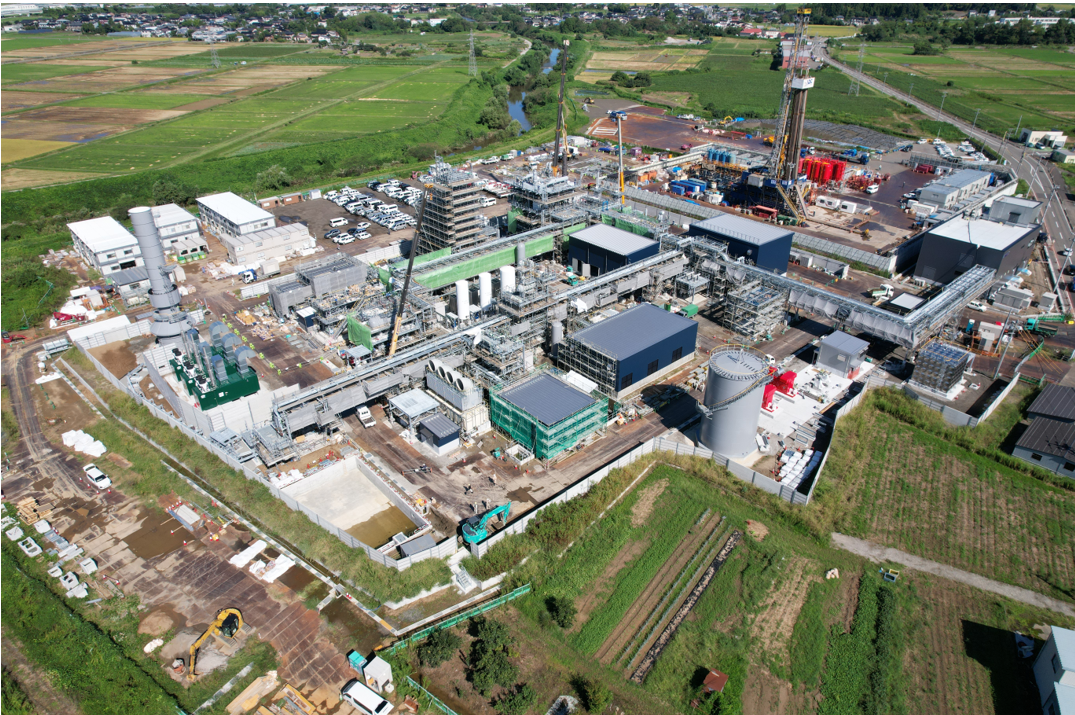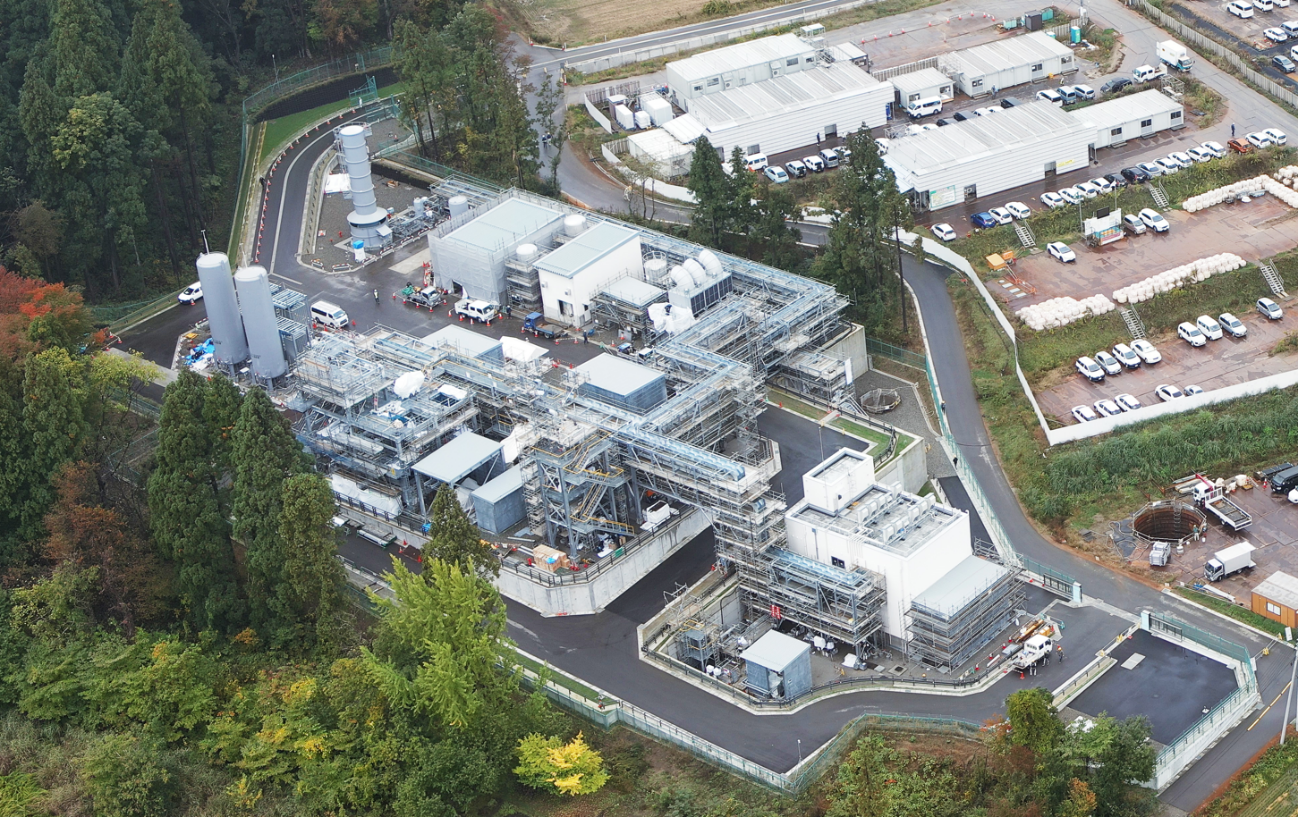INPEX is focused on implementing Hydrogen and ammonia business initiatives through its Hydrogen & CCUS Development Division with the aim of helping realize a net-zero carbon society by 2050.
One of our initiatives in this business field is the construction of a demonstration plant in Kashiwazaki City, Niigata Prefecture, to produce blue hydrogen1 and ammonia. Operations are scheduled to begin by 2025 (see photo below). The plant will source natural gas as a raw material from the INPEX-operated Minami-Nagaoka Gas Field, also in Niigata Prefecture. Furthermore, the CO2 generated as a byproduct in the production process will be injected into the storage layer beneath the Hirai district of the Higashi Kashiwazaki Gas Field, which has already ceased production, thereby reducing emissions into the atmosphere.
The hydrogen produced in this manner is known as blue hydrogen. The blue hydrogen produced in this demonstration experiment will be supplied as electricity to consumers in Niigata Prefecture through hydrogen power generation facilities. Additionally, a portion of the blue hydrogen will be used to produce blue ammonia, which will also be supplied to consumers in Niigata prefecture. While implementing the project, we will utilize the knowledge and capabilities that we have accumulated from our experience operating natural gas-related facilities and drilling wells, and our technologies for monitoring subsurface conditions and wells in addition to capturing and injecting CO2.
Based on the results of this demonstration experiment, we will promote new businesses in Japan and abroad, including clean ammonia production in the United States.
Furthermore, we will continue to explore the issues of transport and storage technology, which are critical elements of the hydrogen supply chain, as part of the I-RHEX technical initiative.

Methanation
Methanation is a technology that involves the reaction between carbon dioxide and hydrogen to produce methane, the main component of city gas. Carbon-neutral synthetic methane, which uses non-fossil energy sources such as green hydrogen manufactured using renewable energy, is known as e-methane. E-methane can be supplied to consumers using existing infrastructure, contributing to the decarbonization of society, including areas where electrification is challenging, without significant additional investment in infrastructure.
In the sixth basic energy plan announced by the Ministry of Economy, Trade and Industry (METI) in October 2021, as well as the “Green Growth Strategy towards Carbon Neutrality in 2050,” announced in collaboration with relevant ministries in June 2021, the decarbonization of gas has been positioned as one of the initiatives for the next-generation thermal energy industry. A goal has been set for Japan’s gas infrastructure to be composed of one percent synthetic methane by 2030.
From 2017 to 2021, we conducted the preliminary technical development of CO2 methanation using CO2 emitted as a byproduct of natural gas production at the Koshijihara Plant, which is part of INPEX JAPAN’s Nagaoka Field Office in Nagaoka City, Niigata Prefecture1, achieving a synthetic methane production capacity of eight normal cubic meters per hour.
We then launched a project in 2021 to develop practical methanation technology2 with a synthetic methane production capacity of 400 normal cubic meters per hour near the same plant. We plan to introduce synthetic methane into our existing pipelines by 2025 and are advancing construction work (see photo below). We also aim to develop technology to further scale up production, with the goal of reaching a synthetic methane production capacity of 10,000 normal cubic meters per hour and producing approximately 60,000 tons of synthetic methane per year by the 2030s. The synthetic methane is also intended to be supplied to consumers through our natural gas trunk pipeline network.
-
*1NEDO commissioned project "Next-generation Thermal Power Generation Technology Development/Next-generation Thermal Power Generation Basic Technology Development/CO2 Effective Use Technology Development."
-
*2NEDO issue-setting industrial technology development subsidy project "Carbon Recycling/Next-generation Thermal Power Generation Technology Development/CO2 Emission Reduction & Effective Use Practical Technology Development/CO2 Utilization Technology Development for Gas Fuel/Practical Technology Development for Pipeline Injection Using Large-scale CO2-Methanation System."
